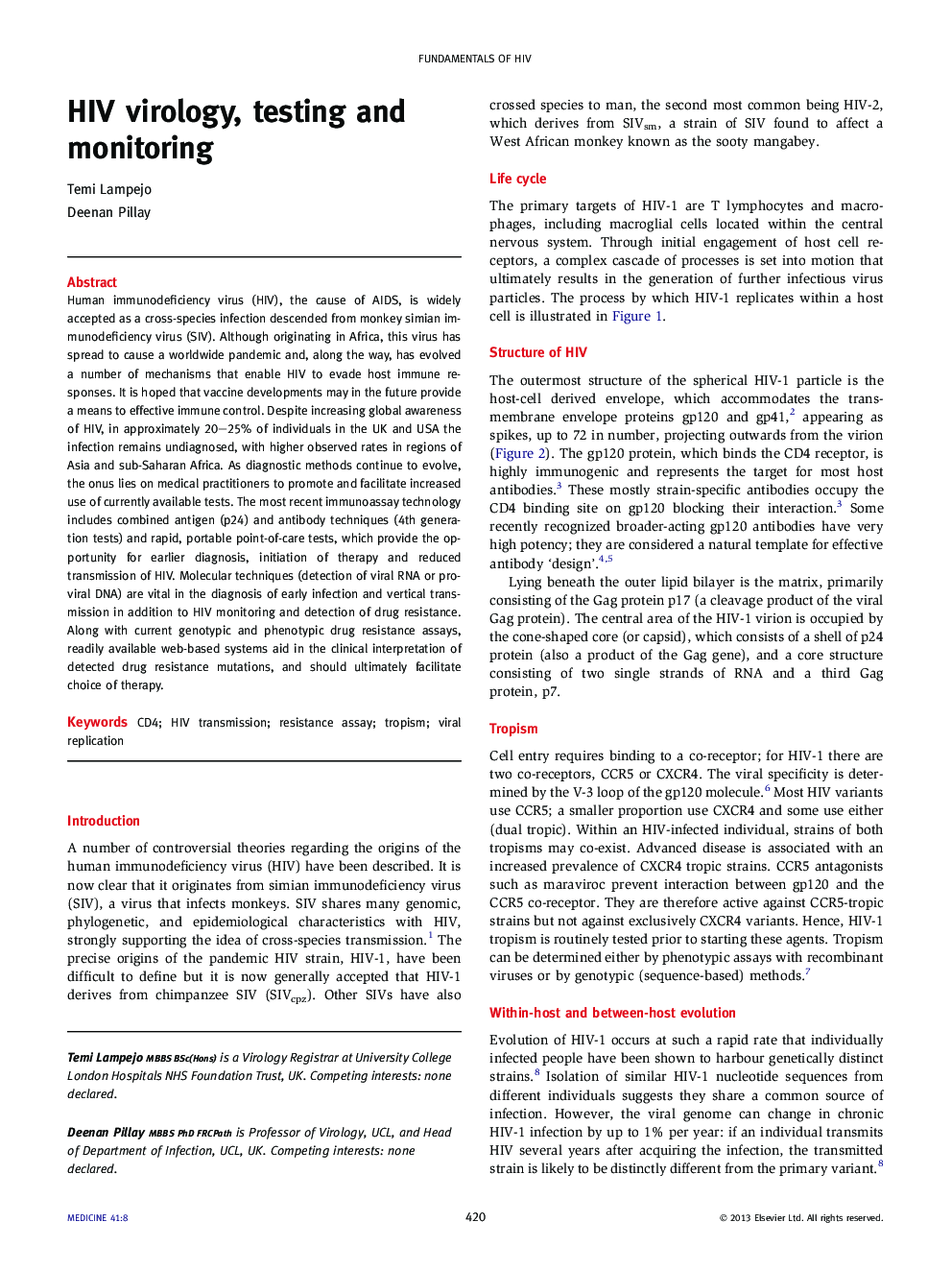| Article ID | Journal | Published Year | Pages | File Type |
|---|---|---|---|---|
| 3807160 | Medicine | 2013 | 5 Pages |
Human immunodeficiency virus (HIV), the cause of AIDS, is widely accepted as a cross-species infection descended from monkey simian immunodeficiency virus (SIV). Although originating in Africa, this virus has spread to cause a worldwide pandemic and, along the way, has evolved a number of mechanisms that enable HIV to evade host immune responses. It is hoped that vaccine developments may in the future provide a means to effective immune control. Despite increasing global awareness of HIV, in approximately 20–25% of individuals in the UK and USA the infection remains undiagnosed, with higher observed rates in regions of Asia and sub-Saharan Africa. As diagnostic methods continue to evolve, the onus lies on medical practitioners to promote and facilitate increased use of currently available tests. The most recent immunoassay technology includes combined antigen (p24) and antibody techniques (4th generation tests) and rapid, portable point-of-care tests, which provide the opportunity for earlier diagnosis, initiation of therapy and reduced transmission of HIV. Molecular techniques (detection of viral RNA or proviral DNA) are vital in the diagnosis of early infection and vertical transmission in addition to HIV monitoring and detection of drug resistance. Along with current genotypic and phenotypic drug resistance assays, readily available web-based systems aid in the clinical interpretation of detected drug resistance mutations, and should ultimately facilitate choice of therapy.
